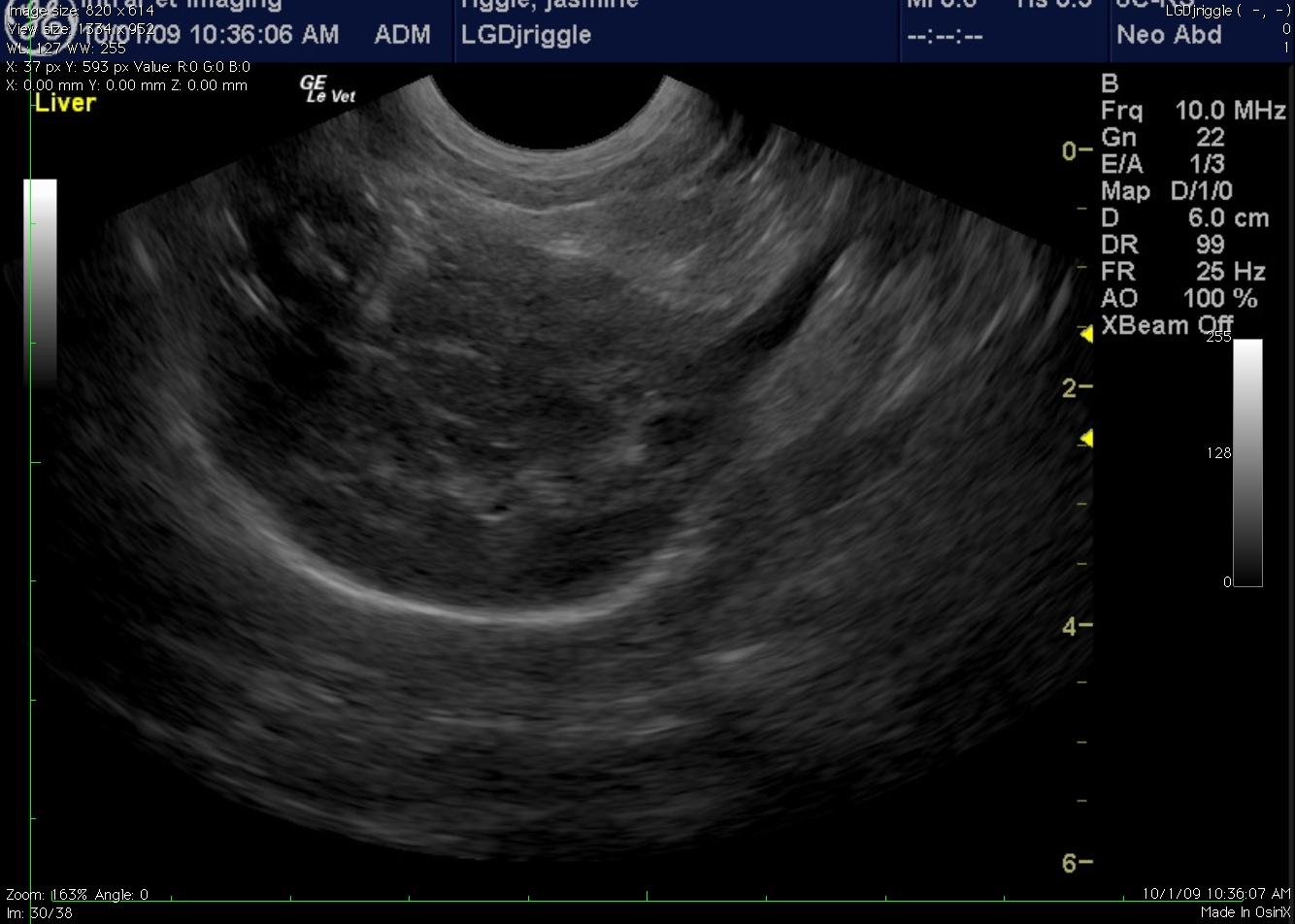A 9-year-old FS Yorkshire Terrier was presented for evaluation of a dermatitis characterized by thick crusts involving the pads of all four limbs, as well as the trunk. The crusts were thick and firmly adhered to the underlying dermis. The dog also had hyperkeratosis of the nasal planum, dermatitis of the upper lips and perianal region. The dog was mildly pruritic. The dog was treated with multiple antibiotics, antihistamines and topical treatments, to which there was no response. In addition, the dog had developed progressive anorexia, and weight loss.
A 9-year-old FS Yorkshire Terrier was presented for evaluation of a dermatitis characterized by thick crusts involving the pads of all four limbs, as well as the trunk. The crusts were thick and firmly adhered to the underlying dermis. The dog also had hyperkeratosis of the nasal planum, dermatitis of the upper lips and perianal region. The dog was mildly pruritic. The dog was treated with multiple antibiotics, antihistamines and topical treatments, to which there was no response. In addition, the dog had developed progressive anorexia, and weight loss. Skin scrapings and cultures of the skin did not reveal any signs evidence of mites or bacterial growth, respectively. Cytology of the skin scrapings revealed neutrophilic debris, epithelial cells, however, there was no evidence of microorganisms. A CBC was performed and revealed a mild anemia. A serum biochemical profile showed a mild hypoalbuminemia, hypomagnesemia, as well as a mild elevation of the serum alkaline phosphatase enzyme activity, urea and creatinine.
Case Study
Hepatocutaneous syndrome in a 9 year old FS Yorkshire Terrier with alopecia and crusting foot pads
Sonographic Differential Diagnosis
These findings are compatible with an extensive infiltrative process with differentials including hepatocutaneous syndrome, neoplasia such as hepatocellular carcinoma, extensive nodular hyperplasia or fibrosis associated with a chronic inflammatory process. Cirrhosis is considered less likely, given the suspected normal to increased volume of the liver.
Image Interpretation
The included liver is moderately hyperechoic, possessing a complex echotexture comprised of coalescing, isoechoic to hypoechoic, vascular and serosal displacing nodules separated by curvilinear echogenic foci and hyperechoic portal vascular walls.
DX
Outcome
Biopsies of junction of footpad/skin and elbow: prominent parakeratosis is consistent with a metabolic/nutritional dermatosis. The clinical/ultrasound liver disease and occasional superficial epidermal pallor make Hepatocutaneous Syndrome most likely. Patient currently under treatment with very guarded long-term prognosis.
Comments
(I have to double check which of the pemphigus (foliacius, erythema or vulgaris; I have drawn a blank re: the names depending upon whether the mucocutaneous junctions are affected or not:) TEN (I need to check this one out also, but I don’t have Danny Scott’s book with me – I will check it tomorrow). Above comments predate my involvement. EL review. Fern
Clinical Differential Diagnosis
Hepatocutaneous syndrome, Erythema multiforme, pemphigus, TEN
Sampling
None as clinical and sonographic presentations evaluated by the dermatologist consistent with hepatocutaneous syndrome. Owner did not permit sampling of the liver.
Video
Media error: Format(s) not supported or source(s) not found
Download File: http://sonopath-videos.s3.amazonaws.com/sites/default/files/case_studies/videos/converted/03_00104_video_01_07122011044510.mp4?_=1Media error: Format(s) not supported or source(s) not found
Download File: http://sonopath-videos.s3.amazonaws.com/sites/default/files/case_studies/videos/converted/riggle_jasmine_12092009055355.mp4?_=2Patient Information
Clinical Signs
- "Not Doing Right"
- Anorexia
- Depression
- Hair loss
- Lethargy
- Pendulous Abdomen
- Skin Lesion
- Weight loss
History
- Antibiotic therapy
Exam Finding
- Alopecia
- Dry skin
- Hepatomegaly
Blood Chemistry
- Albumin, Low
- Alkaline Phosphatase (SAP), High
- BUN high
- Creatinine, High
- Magnesium, Low
CBC
- RBC, Low
Clinical Signs
- "Not Doing Right"
- Anorexia
- Depression
- Hair loss
- Lethargy
- Pendulous Abdomen
- Skin Lesion
- Weight loss



